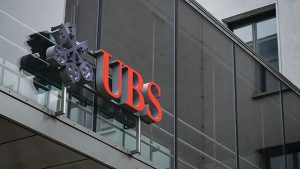When UBS Group AG ditched its biggest acquisition in more than two decades with no explanation, investors and everyone else were left to guess what happened.
Wall Street analysts have presumed that $1.4 billion is now just too much to pay for Wealthfront, a US digital investment adviser that won’t make profits for years. Vertigo-inducing fintech valuations have returned rapidly to earth since the deal was struck in January, exemplified by Klarna AB. The Swedish Buy Now Pay Later company raised funds this summer at less than one-fifth of its valuation just 12 months earlier.
But price isn’t a sufficient explanation – UBS never attempted to justify the valuation, nor is it suddenly in need of conserving cash. Abandoning the deal likely signals that Colm Kelleher, who took over as chairman in April, may have a different view from Chief Executive Officer Ralph Hamers about how UBS should grow its US business and improve its technology.
The bank gave no reckoning on the purchase price for Wealthfront when it struck the deal. Analysts viewed it as a high valuation at the time, equivalent to more than 5% of assets under management when similar businesses traded at closer to 3% of assets last year, according to data from Houlihan Lokey. UBS also never disclosed financial expectations nor targets for the deal. In fact, Hamers told investors it would be counterproductive to try and make it profitable too soon. “If you expect [profits] to come from a business like that in the first five years, basically, you’re setting it up for failure,†he said when discussing the purchase during February’s full-year earnings call.
The CEO wanted to protect it from pressures to produce quick returns, preferring to let it pursue growth among younger, tech-savvy US clients who are wealthy but not among UBS’s main super-rich clientele. But Hamers also sold it as an acquisition of the engineering talent and innovative culture of Wealthfront: UBS was buying the people who could improve its technology elsewhere.
Hamers had a technology-led focus on growth first and profits later in his previous role as CEO of ING Groep NV. The Dutch bank has long had a good reputation for innovation and digital banking in Europe but that didn’t translate into strong stock performance over the last two years of his leadership. Steven van Rijswijk, his successor as CEO, swiftly refocused ING on profitability, pulling out of markets like the Czech Republic, abandoning a costly and ambitious IT project and shutting down a payments company it had acquired in 2018.
Kelleher came from a long career at Morgan Stanley, which is UBS’s closest peer on Wall Street in strategy and business mix. Its US wealth and asset management units have grown significantly over the past decade through acquisitions like Smith Barney in 2012 and, E*Trade and Eaton Vance. These added immediate scale to Morgan Stanley’s assets and took the share of profits from those units to nearly 50% from one quarter previously.
—Bloomberg
 The Gulf Time Newspaper One of the finest business newspapers in the UAE brought to you by our professional writers and editors.
The Gulf Time Newspaper One of the finest business newspapers in the UAE brought to you by our professional writers and editors.
